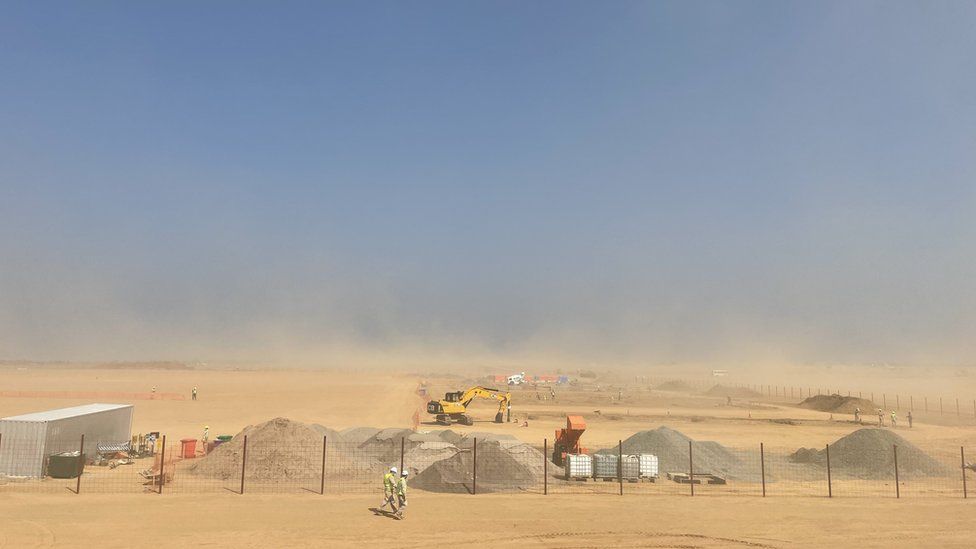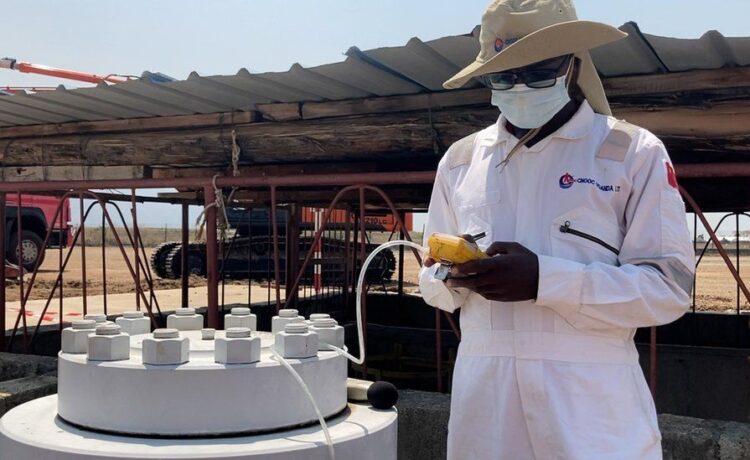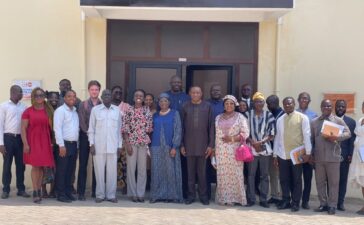The heat is unbearable; the haze merges the sky, lake and land; kingfishers dive and rise as if playing with the wind coming off Lake Albert, near vast oil reserves which Uganda wants to start exploiting.
This section of the Rift Valley – a geological scar which runs through East Africa – is being transformed by a fledgling oil business.
There are environmental concerns and questions over whether it is too late for an oil boom – but there is no disputing that change is coming to the wide valley floor, below the steep escarpment.
One end is dotted with iron-sheet houses, at the other excavators are busy clearing ground for what will be the Kingfisher oil field’s main processing facility in mid-western Uganda.
A once-treacherous dirt road leading down the valley side is now a winding tarmacked route which carries the equipment needed.
The ground is being prepared at one of the sites where oil will be pumped out of the ground
Close to where waves lap the shore of the lake, an environmental officer checks that the cap on an oil well head is airtight and free of gas leaks.
It is hoped that by 2025 the first of a potential 1.4 billion barrels of oil will be pumped from this and other wells across this region.

At the beginning of the month, Uganda, the China National Offshore Oil Corporation (CNOOC) and France’s TotalEnergies signed the Final Investment Decision (FID), a major step towards developing the country’s oil and gas industry.
More than $10bn (£7.4bn) will be invested in the joint venture. The money will be used to develop several upstream facilities as well as the East African Crude Oil Pipeline, which will run for 1,400km (870 miles) from landlocked Uganda to the port of Tanga in neighbouring Tanzania.
Grazing land cleared
At another Ugandan oil field – still close to Lake Albert but 100km north-east of Kingfisher – dozens of earthmovers criss-cross a construction site for TotalEnergies’ processing facility.
This is where the crude oil will be cleaned of impurities and separated from gas before being pumped to a refinery about 100km away.
A huge section of more than 300 hectares (740 acres) of what was formerly grazing land has already been cleared, and the construction work raises thick plumes of dust.
More than 600 local people have already been affected by the purchase of the land for the site.
Other activities, including a feeder pipeline, roads and wells, will affect another 4,000 people.
Officials from the French multinational say that 60% of them have been fully compensated.
On top of being compensated for their land, they also benefited from a livelihoods restoration programme.
“We received pigs and a bull, to rear as a group… Our sources of income have increased. So even though the oil hasn’t started flowing, we are seeing some benefits,” he says.
Villages where maize and cassava farms once flourished will soon be industrial areas. And while people have benefitted from the compensation there are still questions over whether the disruption to their way of life will be worth it.
There are hopes that local people can take advantage of the job opportunities. According to the legislation that established the oil sector, 16 employment areas, including hospitality, information technology and security, have been ring-fenced for Ugandans.
In addition, facilities like a newly tarmacked road will make it easier for fishermen to transport their catch to market, and refinery by-products such as fertiliser, might improve productive sectors like agriculture.
Source:bbc.com






